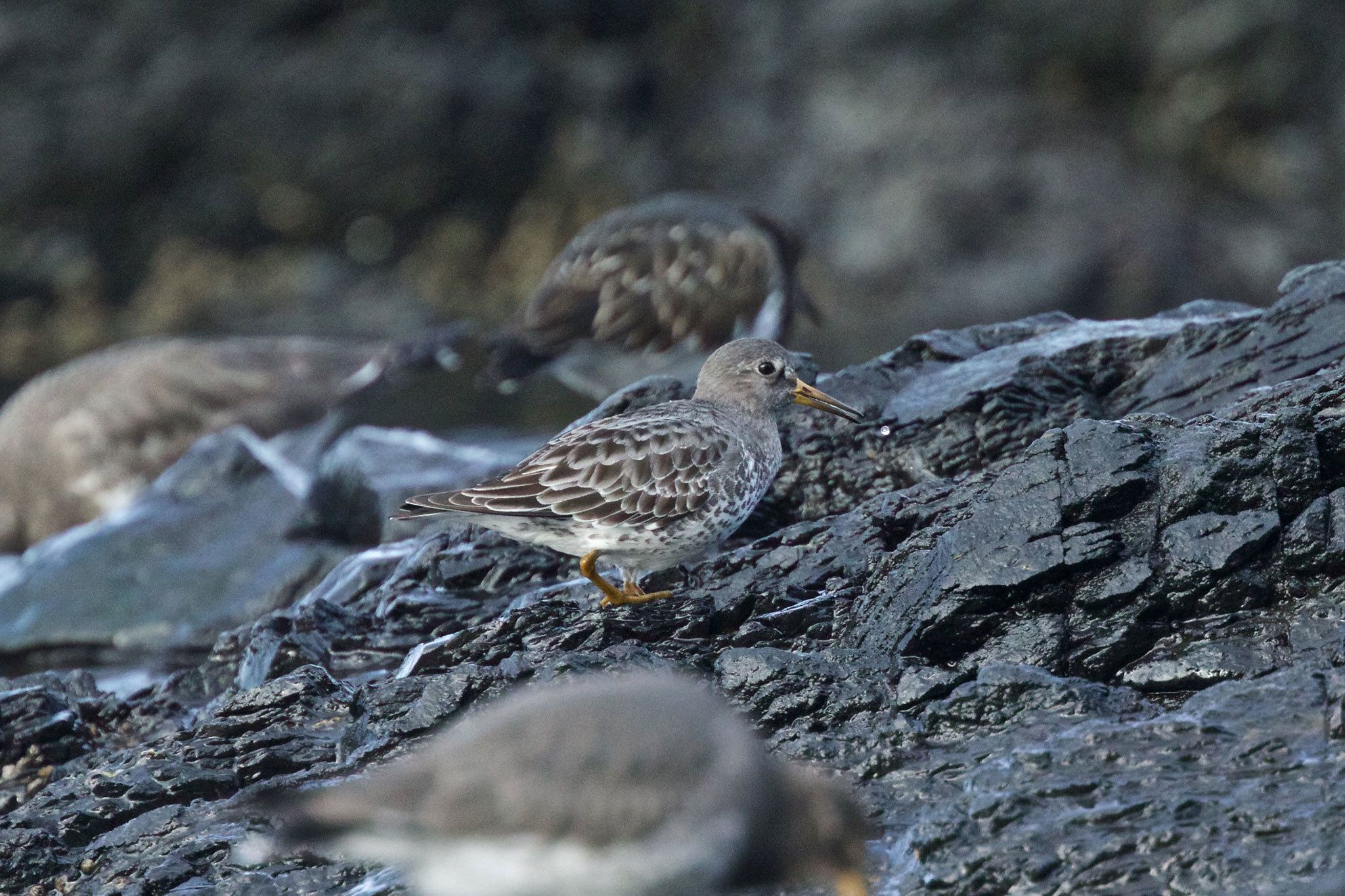In the birding world there are a few interesting descriptive terms, one of them being a “good bird”. A good bird is one that nearly all look forward to viewing, and actively seek out then report their finding. This is one of those birds.
As Gregg Thompson’s photo shows, they are elusive, blending in with the background and moving around quite a bit. And once found, they are even harder to photograph. But if you are fortunate enough to find one and even better to photograph it, you can then claim you have found and photographed a good bird….big points.
General Description: Rock Sandpipers are short-legged, stocky shorebirds with the wonderful ability to survive cold winters farther north than other shorebirds. At 9 inches in length, with a wingspan of 17 inches and weighing 2.5 ounces (females are larger than the males), their non-breeding plumage as seen here in the Harbor is mostly gray with white-edged feathers, a gray head with a medium bill that is yellow-orange at the base, and a white breast with some brown speckling.
Habitat: During the short breeding season Rock Sandpipers are found on the dry tundra, but the rest of the year is spent on rocky shores, jetties, and some rocky beaches, foraging below the tide line.
Behavior: Rock Sandpipers can be found singly or in small groups of other “rock” birds, such as Black Turnstones and Surfbirds, usually just at the splash zone on the rocks. They have been known to briefly swim to avoid land-based predators.
Diet: Unlike most shorebirds, Rock Sandpipers eat a large selection of vegetable matter such as algae, seeds, berries, and moss. They also eat small mollusks, crustaceans and other invertebrates, and marine worms.
Nesting: These are birds of the tundra for the short breeding season, so nests are on the open ground, usually on raised patches of lichen or moss. Males prepare a scrape which is then covered by the female with lichen, leaves or grass. The male does most of the incubation of four eggs for about 20 days. The young leave the nest soon after hatching and can feed themselves, but the male usually tends them until they begin flying, at about three weeks.
Migration: The adult birds molt on their breeding grounds before they move south in the late fall. Those that breed on the islands off Alaska remain there as residents, while the migrants move south along the Pacific coast as far as northern California.
Conservation Status: Rock Sandpipers have been declining in the state of Washington since the 1970’s, though it is unknown why. It is estimated the global population is approximately 200,000 birds and they are considered at risk, but only at the southern end of their wintering range. The decline is not reflected on their breeding grounds.
When and Where to Find on the Harbor: The best time to see these birds is from October to mid-May, and the best places are on our jetties. Just look for small groups of birds at the splash zones flying up as the waves splash the rocks, then resettling as the water recedes. There is a good chance one of those birds will be a Rock Sandpiper.


